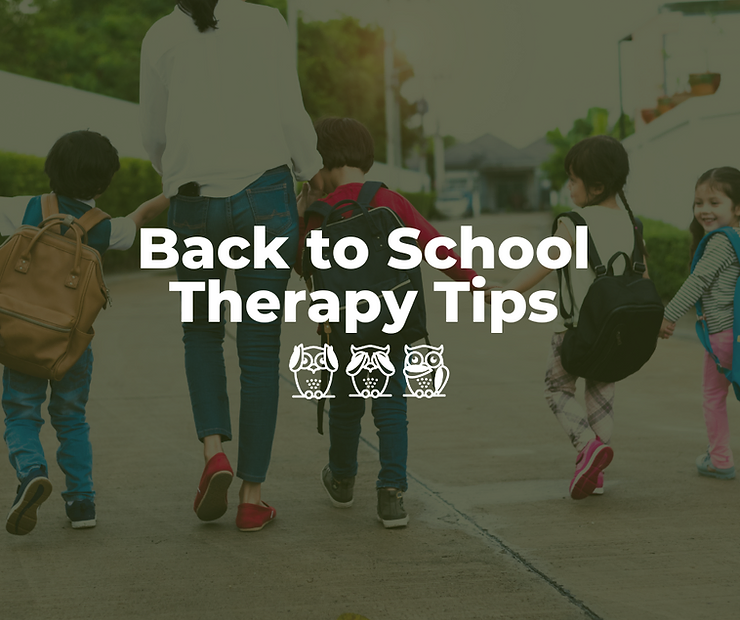The Diversity Amongst Back-To-School Students


Types of Students
1. Kids and teens who are excited and ready for school – these friends come together in this grouping for many reasons. These friends are ready to learn and really enjoy the process of learning. These friends are the kids ready to be out of their homes to hang out with friends more. These are also the kids ready to be away from their home because home is unsafe, unstable, and unpredictable. When you come across these kids don’t doubt their sincerity and don’t downplay their excitement. Welcome their energy to the classroom.
Final Thoughts
8 Effective Tips for Adolescent Therapy


Adolescence is a whirlwind phase in life characterized by rapid physical, emotional, and psychological changes. It’s a time of self-discovery, identity formation, and establishing one’s place in the world. However, it can also be a challenging period marked by uncertainty, peer pressure, and roller coaster emotions.
As parents, caregivers, and mental health professionals, supporting adolescents through this critical stage is essential to their overall well-being.
1. Establish a Safe and Trusting Environment
First of all, at PPH Therapy we create a safe space for adolescents to express themselves openly without fear of judgment.
Therapy sessions are welcoming, confidential, and non-critical. Adolescents often feel vulnerable during this time, so building trust with our therapist is essential to the success of therapy.
Additionally, as parents, your teens should be able to come to you for anything. Create an open, accepting environment; allow them to be free to say whatever they want without lectures or reprimands.
2. Focus on Active Listening
Listening actively and empathetically is a cornerstone of effective adolescent therapy.
Please allow them to voice their concerns, fears, and dreams, and refrain from interrupting or imposing adult perspectives. By truly hearing their experiences, you can gain insights into their inner world and develop appropriate interventions.
3. Validate Their Emotions
Adolescents experience many emotions, and validating what they’re going through is essential. Even if their emotions seem irrational, acknowledging their feelings as real and significant fosters a sense of self-worth. They’ll feel seen and understood.
4. Encourage Self-Expression
Not all adolescents are comfortable expressing themselves verbally.
Therefore, be open to alternative forms of expression, such as art therapy, music therapy, or writing. Engaging in these creative outlets can help adolescents process their emotions and experiences in a non-threatening manner.
5. Address Identity and Self-Esteem Issues
Adolescence is a time when young individuals seek to define their identity and sense of self. Therapy can be a safe place to explore questions of identity, self-esteem, and self-worth. Encourage adolescents to discover their strengths and values while gently challenging negative self-perceptions.
6. Address Peer Relationships and Social Challenges
Peer relationships play a significant role in an adolescent’s life, often bringing joy and stress. Discussing friendship dynamics, conflict resolution, and social challenges can help adolescents develop healthier relationship patterns and coping strategies.
7. Cultivate Resilience and Coping Skills
Helping adolescents build resilience and effective coping mechanisms is vital. Teach them how to deal with stress, setbacks, and disappointments constructively. This will empower them to face life’s challenges more confidently.
8. Normalize Seeking Help
Many adolescents may hesitate to seek therapy, fearing it makes them “different” or “weak.” So, normalize the idea of seeking help for mental health, just as they would for physical health. Emphasize that therapy is a tool for personal growth, not a sign of weakness.
Back To School Therapy Tips To Help Transition


Help Yourself and Your Children Transition Back to School
This is a time of year when there are so many changes for kids, teens, and parents alike. Returning to school brings new and old friends, activities, learning, expectations, and grades. All of that is the added stress of social media, being a kid, family member, and parent.
Okay, writing that started to bring some flashbacks of school…phew! This post is hopefully going to provide ideas, tips, and general direction for kids, teens, and parents to help navigate the coming school year.
Mentally Prepare Yourself and Your Child for The School Year
Going into the school year is a big transition time and everyone involved in this process needs to be on the same page. The ideas to prepare and plan for our life skills, time commitments, education priorities, mental health, and play – giving them chances to be a kid. These things become complicated when expectations are kept silent or one-sided.
Taking time to break each of the above areas down will help parents and caregivers have an idea of how to help their kids and teens.
Priorities to Consider
Life skills examples include planning, organizing, cleaning, communication, boundaries, and responsibility.

Time commitment examples include sitting down together and going through all 168 hours you and your child have in one week. Consider all 24 hours in a day and really help them look at how their time is spent. Look for opportunities to have transition time between school, activities, and homework.
Education priority examples include everyone setting realistic expectations for performance.
Openly discussing learning ability, factors that can impact that, and really having an open min on both sides to accepting limits as well as pushing limits when appropriate.
Mental health is so crucial for kids and teens. The amount of stress, environmental factors, friends, bullies, and social media are all so much to handle. Managing times for breaks; discussing anxiety, suicidal thoughts, depression, and self-harm; support systems; and normalizing conversations and acceptance of these things can open so much in having your kid or teen come to you.
Play examples include time with friends, rest, fun activities, creativity, and using imagination.

With all the things to consider going into a new school year remember that everyone at home is going to have some high emotions during the first 6-8 weeks and then things hopefully will even out.
Keep in mind that home can become a safe place for kids and teens when they know, and trust parents are on their side with their best interests in mind. Invest the time now to be able to create a successful school year for everyone.



